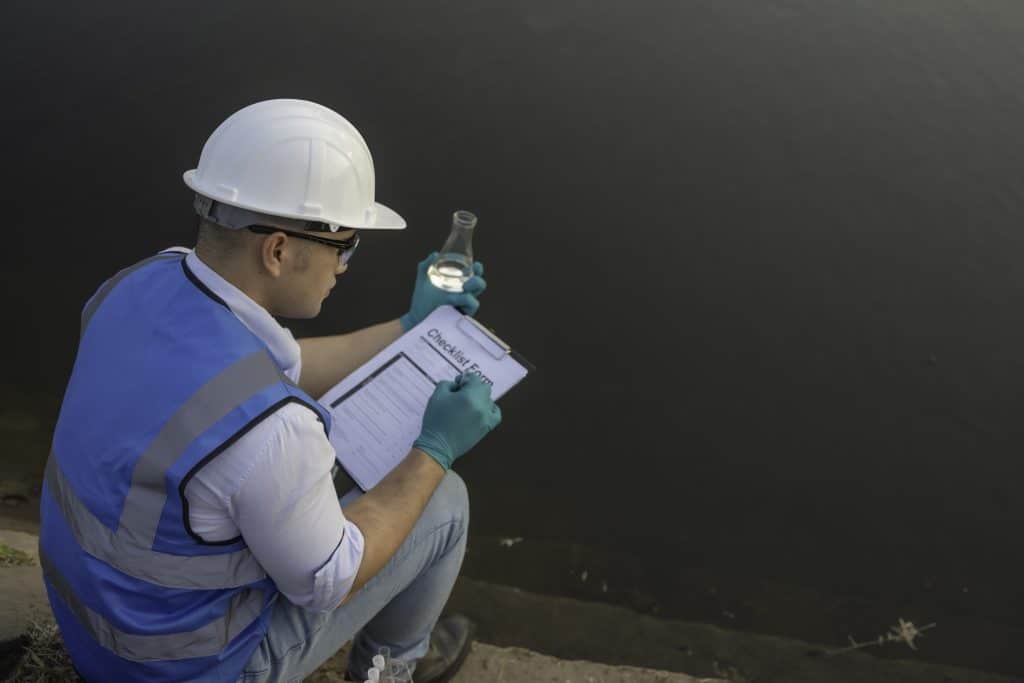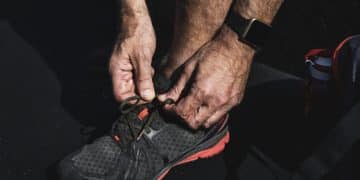Waterproofing Testing: 10,000mm Rain Resistance Explained

Understanding waterproofing performance testing is crucial for evaluating outdoor gear, as it quantifies a material’s ability to resist water penetration, with a 10,000mm rating indicating significant protection against heavy rain conditions.
When venturing into the great outdoors, the reliability of your gear can make or break an experience. Nowhere is this truer than with waterproofing, where the promise of staying dry often hinges on rigorous scientific evaluation. This article delves deep into waterproofing performance testing, specifically examining what a 10,000-metre rain resistance rating truly signifies for outdoor enthusiasts.
The Fundamentals of Waterproofing Technology in Outdoor Gear
Waterproofing in outdoor gear is far more complex than simply applying a coating; it involves a sophisticated interplay of fabric construction, membrane technology, and durable water repellent (DWR) treatments. These elements work in concert to create a barrier against moisture while ideally maintaining breathability, a critical balance for comfort during strenuous activities.
The core principle behind waterproof fabrics lies in their ability to prevent liquid water droplets from passing through, while allowing water vapour (perspiration) to escape. This is typically achieved through microscopic pores in a membrane, which are too small for liquid water but large enough for individual water vapour molecules. Understanding these fundamental technologies is the first step in appreciating the value of robust testing.
Fabric Construction and Membranes
The base fabric provides the structural integrity, but it’s the waterproof membrane that does the heavy lifting in preventing water ingress. These membranes, often made from expanded polytetrafluoroethylene (ePTFE) or polyurethane (PU), are laminated to the fabric layers. Their effectiveness is paramount to the overall waterproofing performance.
- ePTFE (e.g., Gore-Tex): Known for its high waterproofness and breathability, featuring billions of microscopic pores.
- PU Membranes: Often more affordable, offering good waterproofness but sometimes less breathability than ePTFE.
- 2-Layer Construction: Membrane bonded to the outer fabric, with a separate lining.
- 2.5-Layer Construction: Membrane bonded to the outer fabric, with a printed protective layer on the inside.
- 3-Layer Construction: Membrane sandwiched and bonded between an outer fabric and an inner lining, offering maximum durability.
Beyond the membrane, the outer fabric often receives a DWR treatment. This chemical coating causes water to bead up and roll off the surface, preventing the fabric from saturating, which would otherwise impair the membrane’s breathability and make the garment feel heavy and cold. The longevity and effectiveness of DWR are also key factors in sustained waterproofing.
In conclusion, achieving reliable waterproofing is a multi-faceted endeavour, relying on innovative fabric technologies and careful construction. These foundational elements directly influence a garment’s ability to withstand the elements, making their evaluation through testing indispensable.
The Science Behind 10,000mm Rain Resistance
The term ‘10,000mm rain resistance’ is a common benchmark in the outdoor industry, but what does it actually mean? This figure refers to the hydrostatic head test, a standard method for measuring a fabric’s waterproof capability. It quantifies the pressure a fabric can withstand before water begins to penetrate, providing a tangible metric for consumers.
Essentially, a column of water 10,000mm (10 metres) high can be placed on a square inch of the fabric before water starts to seep through. While this might sound like an extreme amount of water, it’s a practical measure that translates directly to real-world performance under various rain conditions. Understanding this scientific basis helps consumers make informed decisions.
Hydrostatic Head Test Explained
The hydrostatic head test is the industry standard for measuring waterproofness. A fabric sample is clamped taut under a column of water, and the height of the water column is gradually increased until three drops of water are observed penetrating the fabric. The height of the water column at this point is the fabric’s hydrostatic head rating, expressed in millimetres.
- Test Apparatus: A device that creates a controlled column of water or applies increasing water pressure.
- Measurement Unit: Millimetres (mm) of water column.
- Threshold: The point at which three drops of water pass through the fabric.
- Industry Standard: Higher numbers indicate greater waterproofness.
A rating of 10,000mm is considered excellent for general outdoor use, signifying that the garment can withstand moderate to heavy rain and wet snow for extended periods without leaking. For context, a rating of 1,500mm might be considered minimally waterproof, offering protection against light showers, while ratings exceeding 20,000mm are typically reserved for extreme mountaineering or prolonged exposure to torrential conditions.
This scientific approach provides a standardised way to compare different waterproof materials. It removes subjectivity and offers a quantitative measure that consumers can use to gauge a product’s suitability for their intended activities. The 10,000mm figure is therefore not just a number, but a promise of reliable protection in challenging environments.
Standardised Testing Methodologies and Industry Benchmarks
Beyond the hydrostatic head test, a range of standardised testing methodologies and industry benchmarks ensure that waterproofing claims are accurate and consistent across manufacturers. These tests go beyond simple water resistance, evaluating durability, breathability, and overall garment performance under simulated conditions. Adherence to these standards builds consumer trust and ensures product quality.
Reputable manufacturers invest heavily in these testing protocols, often collaborating with independent laboratories to validate their products. This commitment to rigorous evaluation is what differentiates high-performance outdoor gear from less reliable alternatives, offering consumers peace of mind during their adventures.
Key Waterproofing Standards
Various international standards bodies, such as ISO and ASTM, define specific testing methods for waterproof fabrics. These standards ensure that tests are conducted consistently, regardless of location or laboratory, allowing for accurate comparisons between products.
- ISO 811: The primary standard for determining resistance to water penetration (hydrostatic pressure test).
- ASTM E96: Measures water vapour transmission rate (WVTR), an indicator of breathability.
- AATC 35: A spray test that evaluates the DWR finish’s ability to repel water from the fabric surface.
It is important to recognise that a fabric’s waterproof rating is just one aspect of its overall performance. A garment’s design, seam sealing, and zipper construction also play crucial roles. Even a highly waterproof fabric will fail if seams are not properly taped or if zippers are not water-resistant. Therefore, comprehensive testing often includes evaluating the finished product, not just the raw material.
The industry benchmark of 10,000mm is widely accepted as a good baseline for versatile outdoor gear. While some brands may exceed this, 10,000mm offers a robust level of protection for most users. These benchmarks provide a common language for manufacturers and consumers, simplifying the decision-making process for purchasing reliable outdoor equipment.
The Role of Seam Sealing and Zippers in Overall Waterproofness
While the fabric’s waterproof rating is fundamental, it’s only one piece of the puzzle. The most advanced waterproof fabric is rendered useless if water can seep through the seams or zippers. Therefore, the techniques used for seam sealing and the quality of zippers are equally critical to a garment’s overall waterproofing performance. These often-overlooked details are what truly complete the protective barrier.
Manufacturers employ sophisticated methods to ensure these vulnerable areas are as impervious to water as the fabric itself. Understanding these techniques empowers consumers to scrutinise product specifications beyond just the fabric’s hydrostatic head rating, ensuring a fully waterproof garment.
Advanced Seam Sealing Techniques
Seams are inherently weak points in any waterproof garment because they involve stitching, which creates tiny holes in the fabric. To counteract this, manufacturers apply waterproof tape over the seams on the inside of the garment, effectively sealing these perforations.
- Taped Seams: All critical seams (e.g., shoulders, hood, main body) are covered with a waterproof tape.
- Welded Seams: Some high-end garments use ultrasonic welding to join fabric panels without stitching, creating a completely waterproof bond.
- Double Stitching: While not waterproof on its own, it adds durability before taping.
The quality of the seam tape and the application process are crucial. Poorly applied tape can peel or crack over time, compromising the garment’s waterproof integrity. Reputable brands use high-quality, durable tapes and precise application methods to ensure long-lasting protection.
Similarly, zippers are common entry points for water. Standard zippers offer minimal water resistance. For waterproof garments, manufacturers utilise specialised water-resistant or waterproof zippers. These often feature coated teeth or internal flaps to prevent water ingress.
The combination of a highly rated waterproof fabric, meticulously taped seams, and water-resistant zippers creates a truly impermeable barrier against the elements. When evaluating outdoor gear, always check for claims of ‘fully taped seams’ and the type of zippers used, as these details are just as important as the fabric’s hydrostatic head rating.
Evaluating Breathability Alongside Waterproofness
While staying dry from external rain is paramount, managing internal moisture – perspiration – is equally important for comfort and performance in outdoor gear. This is where breathability comes into play. A truly high-performing waterproof garment strikes a delicate balance between keeping water out and allowing sweat to escape. Without adequate breathability, users can become wet from the inside, negating the benefits of waterproofing.
Understanding breathability metrics alongside waterproof ratings provides a more complete picture of a garment’s suitability for various activities. A high waterproof rating with poor breathability might be fine for static protection, but for active pursuits, it can lead to discomfort and even hypothermia in colder conditions.
Measuring Breathability: MVTR and RET
Breathability is typically measured using two main metrics: Moisture Vapour Transmission Rate (MVTR) and Resistance to Evaporative Heat Transfer (RET).
- MVTR (Moisture Vapour Transmission Rate): Measures how much water vapour (in grams) can pass through a square meter of fabric in 24 hours (g/m²/24h). Higher numbers indicate greater breathability. A rating of 10,000 g/m²/24h is considered good for active use.
- RET (Resistance to Evaporative Heat Transfer): Measures the resistance of a fabric to water vapour transfer. Lower numbers indicate less resistance and therefore greater breathability. A RET value below 6 is considered very breathable, while values above 20 are not breathable.
It’s important to note that a garment’s overall breathability is also influenced by features like pit zips, adjustable cuffs, and ventilation systems. These design elements allow users to actively regulate their body temperature and manage internal moisture, even in garments with moderate breathability ratings.
When selecting outdoor gear, consider the activity level. For high-exertion activities, prioritise higher breathability (lower RET, higher MVTR) to prevent overheating and internal condensation. For less active pursuits or extreme cold, a garment with a slightly lower breathability but higher insulation might be more appropriate. A 10,000mm waterproof rating paired with a respectable breathability rating offers a versatile solution for many outdoor enthusiasts, providing both robust weather protection and reasonable comfort.
Maintaining and Prolonging Waterproof Performance
Purchasing high-quality waterproof gear is a significant investment, and its performance depends not only on its initial specifications but also on proper care and maintenance. Neglecting your waterproof garments can lead to a rapid decline in their ability to repel water and breathe effectively. Proactive care ensures that your 10,000mm rain resistance truly lasts through countless adventures.
Understanding the correct methods for cleaning, re-applying DWR treatments, and storing your gear is essential for prolonging its lifespan and maintaining peak performance. This section will guide you through the best practices to keep your outdoor clothing in top condition.
Best Practices for Care and Maintenance
The primary enemy of waterproof performance is dirt and oils, which can clog the membrane’s pores and compromise the DWR finish. Regular cleaning is therefore crucial.
- Wash Regularly: Use technical wash products specifically designed for waterproof fabrics, avoiding conventional detergents, fabric softeners, and bleach.
- Reactivate DWR: After washing, tumble dry on a low heat setting to reactivate the DWR. If water no longer beads effectively, re-apply a spray-on or wash-in DWR treatment.
- Avoid Harsh Chemicals: These can damage the membrane and DWR finish, leading to permanent loss of waterproofness and breathability.
- Proper Storage: Store clean, dry garments in a cool, dark, and well-ventilated area. Avoid compressing them for long periods.
Over time, even the best DWR treatments will wear off, especially in high-abrasion areas like shoulders and elbows. Re-applying DWR is a straightforward process that significantly extends the effective waterproofness of your gear. Many brands offer dedicated DWR restoration products that are easy to use at home.
By following these maintenance guidelines, you can ensure that your waterproof outdoor gear continues to perform at its best, providing reliable protection against the elements for many seasons to come. This proactive approach not only saves money in the long run by extending product life but also ensures your safety and comfort during your outdoor pursuits.
The Future of Waterproofing: Innovation and Sustainability
The outdoor industry is constantly pushing the boundaries of waterproofing technology, driven by both the demand for enhanced performance and a growing commitment to environmental sustainability. The future of waterproofing promises even more effective, breathable, and eco-friendly solutions, moving beyond traditional chemistries and embracing innovative materials and processes.
Researchers and manufacturers are exploring new frontiers, from bio-based DWRs to advanced membrane structures, all aimed at delivering superior protection with a reduced environmental footprint. These innovations will redefine what 10,000mm rain resistance means in the context of responsible product development.
Emerging Technologies and Eco-Friendly Solutions
Traditional DWR treatments often rely on per- and polyfluoroalkyl substances (PFAS), known for their persistence in the environment. The industry is rapidly shifting towards PFAS-free alternatives that offer comparable performance without the ecological concerns.
- PFAS-Free DWRs: Development of new chemistries that are safer for the environment and human health.
- Bio-Based Membranes: Exploration of membranes derived from renewable resources, reducing reliance on petroleum-based materials.
- Recycled Fabrics: Integration of recycled content into waterproof materials, contributing to circular economy principles.
- Nanotechnology: Research into creating ultra-thin, highly effective waterproof barriers at the nanoscale.
Beyond materials, manufacturing processes are also evolving to be more sustainable. This includes reducing water and energy consumption, minimising waste, and adopting closed-loop systems that recapture and reuse chemicals. The entire lifecycle of a waterproof garment is under scrutiny to ensure its environmental impact is as low as possible.
The pursuit of higher performance often goes hand-in-hand with sustainability. Consumers are increasingly demanding products that not only keep them dry but also align with their environmental values. As a result, the future of waterproofing will likely see a greater emphasis on transparency, circularity, and innovative materials that offer both cutting-edge protection and a lighter footprint on the planet. This commitment to continuous improvement ensures that outdoor enthusiasts will have access to gear that is both high-performing and environmentally conscious.
| Key Aspect | Brief Description |
|---|---|
| 10,000mm Rating | Indicates fabric can withstand a 10-metre column of water before penetration; suitable for heavy rain. |
| Hydrostatic Head Test | Standard laboratory method to quantify a fabric’s water resistance in millimetres. |
| Seam Sealing | Crucial for overall garment waterproofness, as taped seams prevent water ingress through stitch holes. |
| Breathability (MVTR/RET) | Measures how well a fabric allows sweat vapour to escape, crucial for internal comfort and dryness. |
Frequently Asked Questions About Waterproofing Performance
A 10,000mm waterproof rating signifies that a fabric can withstand the pressure of a 10-metre column of water before leakage occurs. This level of resistance is generally considered excellent for outdoor gear, providing reliable protection against moderate to heavy rain and wet snow for extended periods, suitable for various activities.
Waterproofing performance is primarily tested using the hydrostatic head test (ISO 811). This involves clamping a fabric sample under a column of water and increasing its height until three drops penetrate. The height of the water column in millimetres at this point is the fabric’s waterproof rating.
Seam sealing and water-resistant zippers are crucial because even the most waterproof fabric will fail if water can enter through stitch holes or zipper openings. Taped seams prevent leakage at stitching points, while specialised zippers create a complete barrier, ensuring the garment’s overall waterproof integrity.
Waterproof implies complete protection against water penetration under significant pressure, as indicated by a hydrostatic head rating. Water-resistant means the fabric can repel light rain or splashes but will eventually soak through under sustained exposure or pressure. Waterproof gear offers a much higher level of protection.
To maintain waterproof performance, regularly clean your gear with technical wash products, avoiding conventional detergents. Reactivate the Durable Water Repellent (DWR) finish by tumble drying on low heat, and re-apply DWR treatments when water no longer beads effectively. Proper storage in a clean, dry place is also vital.
Conclusion
Understanding waterproofing performance testing reveals that a 10,000mm rain resistance rating represents far more than a number—it’s the result of meticulous field evaluations and material science. This benchmark reflects how well a garment or coating can withstand water pressure before leakage occurs, ensuring durability and comfort even under extreme conditions. As outdoor gear manufacturers continue to refine their methods, these metrics help define product integrity and consumer trust.
Yet, the effectiveness of waterproofing doesn’t rely solely on lab measurements. Proper field testing, including spray, hydrostatic, and exposure assessments, verifies how materials perform in real-world environments. These processes account for key details such as seam sealing, zipper bonding, and fabric breathability, ensuring that every component functions harmoniously to maintain true waterproof protection. The precision of these evaluations determines whether a product can endure years of heavy rain, abrasion, and temperature fluctuations.
For professionals and manufacturers aiming to improve reliability, following established best practices is essential. The International Institute of Building Enclosure Consultants (IIBEC) provides an excellent resource on the importance of proper field testing for waterproof coatings, offering insights into standardized methods and quality assurance procedures. You can explore their detailed publication here. By adopting these testing principles, designers and consumers alike can ensure that waterproof materials remain not only functional but sustainable—delivering long-lasting performance in every adventure.





